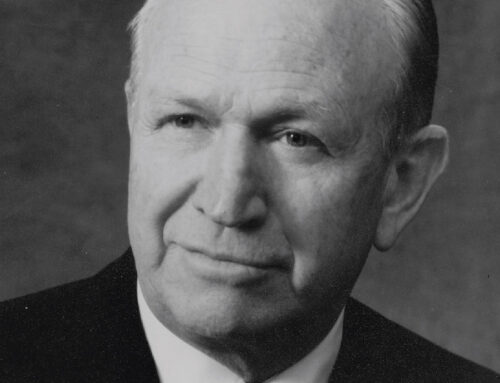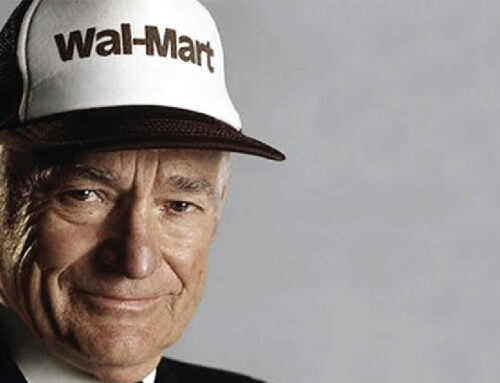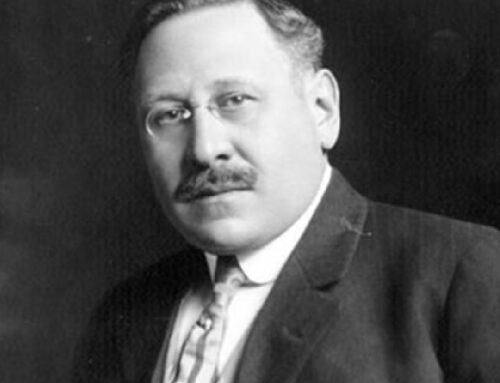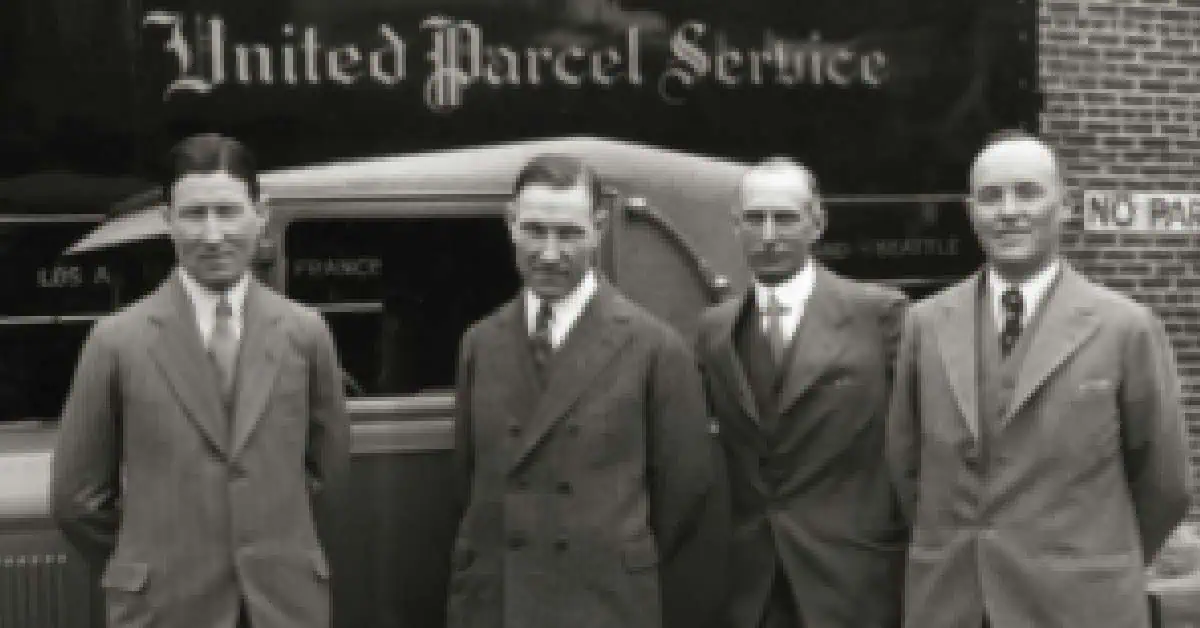
These days the news and chatter on the Internet are filled with stories of Apple, Amazon, Google, and Facebook. In this environment, it can be easy to forget or take for granted the other great enterprises that make the world go ’round.
On August 28, 1907, nineteen-year-old James Emmett “Jim” Casey and his friend Claude Ryan borrowed $100 and founded the American Messenger Company in a six-foot by seven-foot basement office below a Seattle saloon. They hired six boys to deliver telegraph and other messages throughout Seattle and run errands for people. Nine competing messenger services already existed in booming Seattle, America’s closest port to Asia and gateway to the riches of Alaska and the Yukon.
From those humble beginnings sprang United Parcel Service, known today as just “UPS,” the world’s largest and most valuable transportation company. In 2017, the company delivered over 5 billion packages to 220 countries. UPS is one of the world’s largest (and best) non-government employers, with 454,000 employees.
Yet few know the name of Jim Casey, and not enough of us know the amazing story of the creation and rise of UPS. Here is the remarkable story of a man, his obsession, and his legacy.
“Never promise more than you can deliver, and always deliver what you promise.”
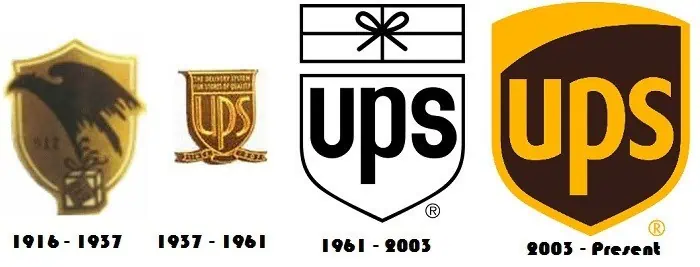
Beginnings
Henry Casey came from County Galway, Ireland. Annie Sheehan was the daughter of immigrants from Ireland’s County Cork. The two met in Chicago, where they were married. The young couple soon moved to the mining district of Candelaria, Nevada, where they ran a saloon. Henry prospected for silver, but contracted a miner’s lung disease. On March 29, 1888, the first of their four children, James Emmett Casey, was born.
In 1897, when Jim was nine years old, the family moved to Seattle, a booming city of 65,000 people. This growth accelerated in the summer of 1897 when 100,000 prospectors rushed for newly discovered gold in the Klondike region of Canada’s Yukon Territory. It has been estimated that only one in four succeeded in the rough journey to the Yukon. Henry Casey was one of those who failed: his ship wrecked and hobbled into the nearest port. Getting sicker and sicker, Henry returned to Seattle.
In this context, Jim had already quit school at the age of eleven. He found work assisting a delivery driver for Seattle’s leading store, the Bon Marche department store, at $2.50 a week. He soon learned the streets, alleyways, and house numbering system of the city. Three weeks into that job, he found higher pay delivering for a tea store and continued his education in “street smarts.” Jim’s two younger brothers also went to work, together supporting the family (which added a baby girl in 1900) on $6 a week.
By mid-1901, Jim was making $5 a week working for the tea store. Desiring to go back to school, he quit that job for a lower-paying night job at American District Telegraph (ADT). Working the 7 p.m.–7 a.m. shift, Jim delivered messages and ran errands. He befriended another young ADT “footpad” (messenger boy), Claude Ryan. On the job, their adventures were diverse: notifying railroad engineers of emergency runs; babysitting kids while their parents went to the theater; pumping a church organ for choir practice; collecting bail for jailbirds; and delivering liquor, cocaine, and opium to customers. Jim even followed spouses for suspicious husbands and wives.
After two more terms of school, the family’s need for money and ADT’s need for Jim’s time and energy forced him to drop out, ending his formal education. Nevertheless, as his life story makes clear, Jim Casey never stopped learning, reading, and listening to others. His intense curiosity grew and grew.
In 1902, Henry Casey succumbed to his illness, leaving fourteen-year-old Jim as the man of the house.
The Entrepreneur
By 1903, Jim had saved up $30; he and two friends founded the City Messenger Service to deliver “telephone messages.” Few Seattle residents had phones, but City Messenger Service had two phones, one each from the two early phone companies serving businesses and the wealthy. Business was slow, and after two years the young men sold the company.
Jim and one of his partners then decided to try mining, as Henry had done. They headed to Goldfield, Nevada, the site of another big strike. Failing at mining, the two hired a third man, John Moritz, and began another messenger service. The three made $50 a month delivering messages from the local telephone and telegraph office. In perhaps his first experience with uniforms, the boys wore pillbox hats and double-breasted jackets with brass buttons. This business was a success, but then partner John Moritz was shot and killed by a vagrant. Disheartened, the other two returned to Seattle.
Following these adventures, nineteen-year-old Jim reunited with his ADT friend Claude Ryan to start yet another messenger service, this time called the American Messenger Company, on August 28, 1907. Borrowing $100 in startup funds, they acquired two telephones, two bicycles for long-distance deliveries, and hired six boys. They offered “the best service and the lowest rates” compared to their nine competitors. Moreover, they told customers the truth about when they would pick up their message or package, an unusual practice in the competitive business. Jim’s motto became, “Never promise more than you can deliver, and always deliver what you promise.”
Jim and Claude knew the flow of goods and information in Seattle; they knew every nook and cranny of the city. They posted placards all around Seattle with their phone number and their service and price offering. They charged 15 to 65 cents per message, depending on distance, or 25 cents per hour for errands. American Messenger offered 24-hour service, seven days a week, with the two founders often sleeping on the old lunch counter they used as a desk in their tiny basement office.

As in his prior experience, Jim and his friends had to run many odd errands. One posed for an art class; another took a blind man to a funeral. They minded stores when the owner went to lunch and walked dogs for other customers. This made the business complex and hard to plan. In addition, many customers would call several messenger companies and then give the business to the first to arrive, further wasting the time of his messengers.
Jim hungered for a way to streamline the business, and found it when the nearby King Brothers Clothing store hired American Messenger to deliver merchandise to customers. This consistent daily business added to the revenue American Messenger received from each trip.
American Messenger moved to bigger offices and opened a second location in Seattle when younger brother George Casey joined the business in 1911. By 1912, they had ten messengers at work, which swelled to seventy-five in the Christmas season.
But Jim’s ambition was still not satisfied. He wanted to get the delivery business of other Seattle retailers, especially the giant department stores which dominated retailing in that era. His idea was that the stores would save money by eliminating their large fleets of horse-drawn delivery vehicles. And their customers would receive merchandise from multiple stores in one delivery rather than waiting at home all day for multiple deliveries.
New Partners
“Partnering up” with other messenger services rather than using scarce cash to buy them out became a modus operandi for the realization of Jim’s bigger dreams. In 1913, American Messenger merged with Evert “Mac” McCabe’s Motorcycle Delivery Company. Mac was an extroverted salesman and had as much energy as Jim and Claude. Mac’s wife, Garnet McCabe, helped with the office, but she had a reputation of being hard to get along with. The combined company, now called Merchants Parcel Delivery, had twenty-five messengers and six motorcycles, and soon added a Ford Model T with a bright red van body on the chassis. By 1915, the company was the largest delivery service in Seattle, with four cars, five motorcycles, and thirty messengers on foot. Merchants Parcel covered 1,600 miles a day and generated $2,200 a month in revenue.
The company needed more cash if it were to continue growing, however. After being turned down by bankers, in 1916 Jim convinced Charlie Soderstrom to buy $10,000 worth of Merchants Parcel stock. Charlie was a veteran delivery driver who headed the delivery operations of one of Seattle’s four department stores, Fraser-Paterson. He understood the delivery business and was impressed by Jim and Claude’s skills, integrity, and drive. Charlie Soderstrom brought to the company a knowledge of vehicles and instilled in Jim the importance of washing and maintaining them, a practice that continues at UPS today.
Merchants Parcel considered painting their cars and vans bright yellow to attract attention, or even painting them different colors to make people think the company was larger than it was. But Charlie warned that they should not try to show up their retail customers, who were proud of their brightly decorated delivery vehicles. He had studied the more subtle Pullman brown, the color used on railroad sleeping cars to minimize signs of dust and dirt. Thus the partners decided to go with brown—only slightly modified in today’s UPS brown.
In 1917, reportedly due to conflicts with Garnet McCabe, Claude Ryan left the company. Jim’s brother George Casey joined the navy in World War I, but returned to the company two years later. From then on, the driving forces of Merchants Parcel were Jim and George Casey, Charlie Soderstrom, and Mac McCabe.
Under Jim’s leadership, the group never stopped improving, never stopped learning, and wanted to grow. Jim developed a bin-based parcel sorting system. He reached out to one hundred other delivery companies across America for new ideas, but found little that he and his partners were not already doing.
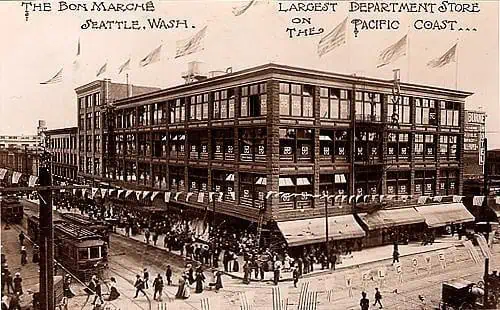
During this period, Merchants Parcel got its first big customer, Seattle’s Bon Marche department store, named after the famous Paris store. Jim and his colleagues made three pickups every day at the big store. The leading stores were reluctant to give up their own delivery operations, where they could advertise on the vehicles and insure good service. At first, “The Bon” kept its own fleet and used Merchants, but was soon satisfied with the new service and abandoned its own delivery fleet. Gradually, Merchants Parcel won over three of the four biggest stores in Seattle. In the coming years, delivering for big retail clients became the key business of the company. “B2C” (business-to-consumer) deliveries became their specialty. In many cases, Jim and his partners took over the stores’ fleets and hired their delivery employees.
In this same era, in pursuit of efficiency, Merchants started using the same driver every day on the same assigned route, so that customers could get to know their driver. And the company began a policy of making three delivery attempts before returning the goods to the shipper. Both of these policies remain intact at UPS today.
As World War I came to an end, the partners wanted to expand to other cities and needed cash. A prominent banker turned them down but inspired them by saying, “Determined men can do anything.” Jim adopted this slogan and expanded upon it to say, “Determined men, working together, can do anything.” From the outset, he had learned to respect his co-workers and to solicit their ideas—from his co-owners to the lowliest delivery boys.
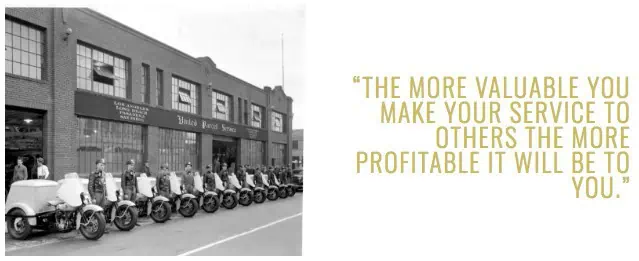
Beyond Seattle
The partners discovered that Motor Parcel Delivery of Oakland, California, was in financial trouble and acquired the company with little cash outlay.
In nearby San Francisco, there was already a Merchants Parcel company, so they could not use that name in the Bay Area. George liked the word “United” as in United Fruit. Mac suggested United Parcel, as Jim was insistent that Parcel be part of the name. And Charlie said their core was Service. Thus the name “United Parcel Service” was born (years later shortened to just “UPS”). With Jim as president, United Parcel Service opened in Oakland in February 1919. (The company continued to use the name Merchants Parcel in Seattle until 1925.)
In the following years, United Parcel Service continued to buy other delivery companies, usually by using shares of stock, thus conserving cash. One small Los Angeles delivery company they acquired in this manner was owned by Joe Meiklejohn; his heirs later gave Orange County hospitals over $80 million from the wealth UPS created for them.
In the early 1920s, Jim and his partners moved their headquarters to Los Angeles, which became an important center for them. While continuing to focus on local delivery for retailers, one of the companies they acquired there had “common carrier” rights—the legal ability to carry any package of any size to any address over a broader area of Southern California. This move diversified the company’s revenue base into “B2B” (business-to-business) but also took them into the more heavily regulated trucking industry.
In 1922, UPS only delivered 2,000 packages a day in the Los Angeles area; by the Christmas peak of 1929, the number hit 29,000.
In 1925, four of the big department stores in San Francisco asked Mac McCabe to take over their delivery operations, which UPS did. Portland was added in 1927.
In March of 1928, Charlie Soderstrom was golfing at the Fox Hills Country Club in Southern California when he was hit in the head by a stray ball. He became almost an invalid and played a lesser role going forward, after his key role in choosing brown, naming the company, and taking care of the vehicles (always called “package cars,” never trucks).
In 1929, UPS delivered more than eleven million packages.
Innovations and Principles
The 1920s saw UPS’s introduction of automatic car washes for its vehicles, conveyor belts for sorting, and the now-famous brown uniforms. From the start, Jim was obsessed with the appearance of his drivers. The company had (and has) strict rules on appearance. Jim himself was always impeccably dressed in a pressed, conservative suit.
Other key ideas developed in these early years included the UPS Policy Book, issued to each employee and listing over one hundred highly detailed policies. The company banned employees’ relatives from being hired by the company, halting any potential issues of nepotism. UPS became highly decentralized, with power delegated into regions, districts, and hubs. Jim required a policy of informality, with everyone called by their first names. Executives did not have private secretaries, and answered their own phones. Their offices had open doors to anyone in the company.
UPS focused intensely on efficiency—the best driving routes, not making left turns if one could avoid them, never backing up, holding the car keys in the right hand for quick starts, and timing and measuring every aspect of the enterprise. The company was understandably focused on safety (today UPS has less than one accident per million miles driven).
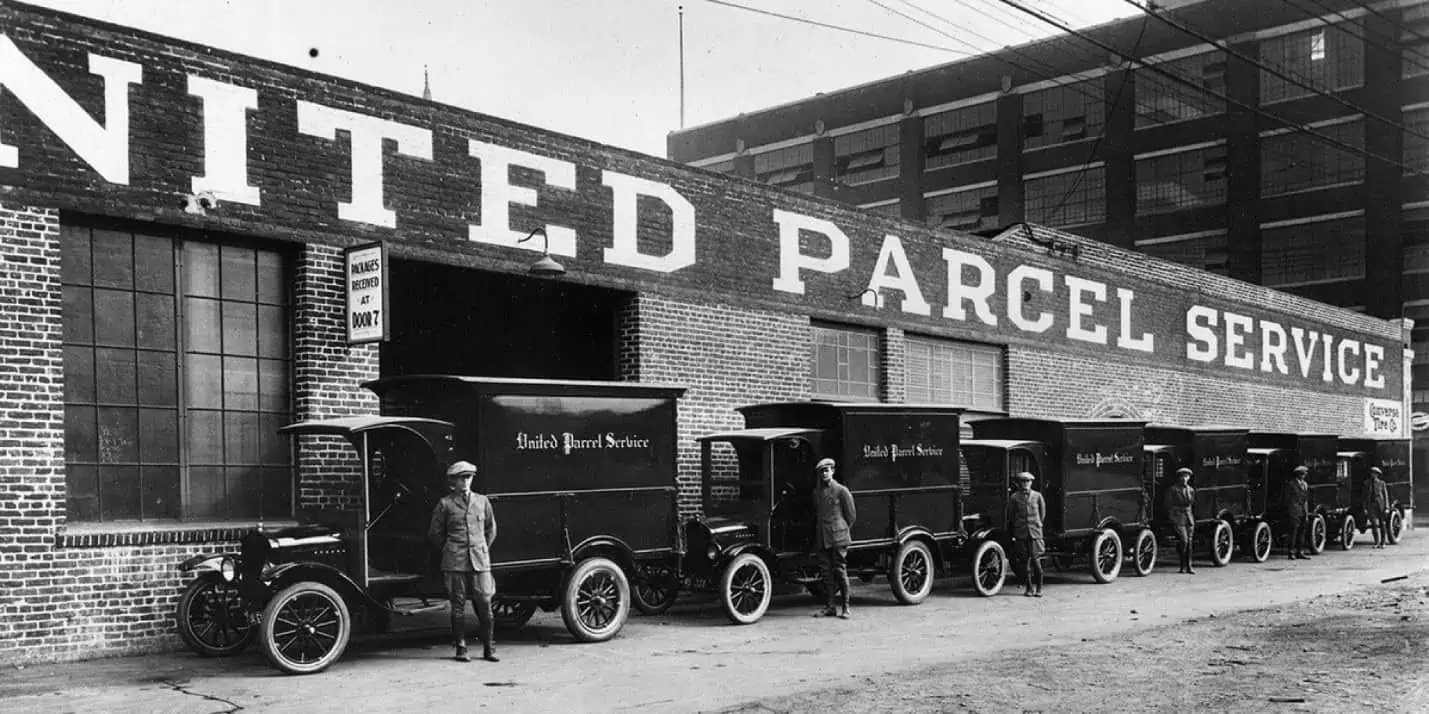
“Anybody can deliver packages – from the small boy in the neighborhood on up to the most extensive delivery systems in the land. The one thing we can have to offer that others will not always have is quality.”
Internal communications became important to the growing company; in 1924, UPS started its first employee newspaper, The Big Idea. Reflecting Jim’s own nature, integrity and honesty were prized above all else. These principles and values remain intact at UPS today.
Such tight rules have been likened to the military; UPS is one of the most disciplined organizations in the world. This type of environment is not right for everyone, but those who love it have found it empowering (because it works) and enriching (in more ways than one). Jim adopted a policy of promotion from within, and today many of the top people at UPS started as drivers or package sorters, and have been with the company over twenty-five years. (Present UPS Chief Executive Officer David Abney began as a Mississippi part-timer when he was nineteen.)
An important development in this time was Jim Casey’s uncommon acceptance of trade unions. While he worked hard to treat all his employees right, he saw the rise of the unions and thought he could work with them. Gradually, city by city, UPS’s drivers became members of the powerful Teamsters’ Union. Most business leaders of the era hated the unions and did everything they could to keep them out. Ten years later General Motors and particularly Ford fought unionization of their factories hard—and lost. Jim felt differently. (In 2017, UPS employed 280,000 members of the Teamsters’ Union, far more than any other company.)
Perhaps the most important change at UPS was Jim’s decision to “share the wealth.” In 1927, consistent with his regard for his associates, the company offered stock in UPS at $15 a share to fifty-two key employees, all of whom but three took advantage of the offer. The recipients were allowed five years to pay for the stock. And they could sell the stock back to the company at a price set four times a year by the board of directors, prices which would consistently rise over the years. One of those $15 shares has now (April 2018) become 16,000 shares worth $1.8 million, a 13.7 percent compounded rate of return over ninety-one years, not counting twice-a-year dividends totaling 2–4 percent per year.
For seventy-two years, all UPS stock was owned by the founders, their families and heirs, and other employees. It became the largest employee-owned company in America. It was not until 1999, sixteen years after Jim’s death, that UPS sold shares to the general public, becoming a “public company.” Today, over 70 percent of the stockholder votes are held by UPS employees and heirs of the founders.
Today’s UPS each year spends billions on health insurance and pensions for both union and non-union employees. The company was among the first to offer such benefits to its employees, usually bearing the entire cost. A book could be filled with all the incentive programs for managers and discounted stock purchase and other benefits for all employees, which continue to this day.
All of this grew out of Jim’s thinking about the people he worked with. UPS had a “corporate culture” decades before the phrase came into common use.
Selling Out and Buying Back, Tragedy and Growth
At Mac McCabe’s urging, UPS took a plunge into air delivery, creating the nation’s first air parcel service, United Air Express, in February 1929. The company contracted with four passenger airlines to carry its packages between Seattle, Portland, San Francisco, Los Angeles, San Diego, Phoenix, and El Paso.
At the same time, Jim and his friends lusted after the big New York City market, but they did not have the capital to enter it. With the stock market booming and many mergers taking place, the newly formed aviation giant Curtiss-Wright (descended from the pioneering companies of Glenn Curtiss and the Wright Brothers) offered to buy UPS, including its new air service. In the fall of 1929, Curtiss-Wright paid $2 million in cash and 600,000 shares of Curtiss-Wright to buy UPS. UPS stockholders became Curtiss-Wright stockholders. UPS used the $2 million to enter New York and moved its headquarters there in 1930 (headquarters moved again, to Connecticut in 1975, and to Atlanta in 1991). Jim and his partners were paid generous annual salaries of $25,000 each and guaranteed management control for five years.
“One measure of your success will be the degree to which you build up others who work with you. While building up others, you will build up yourself.”
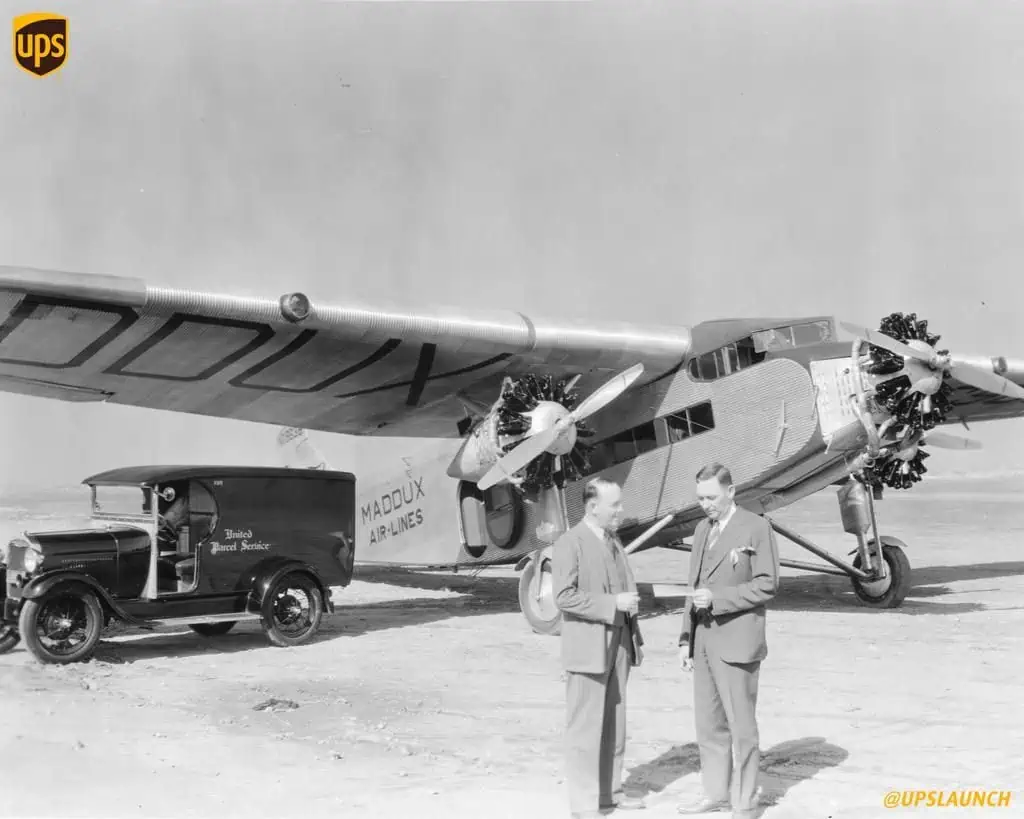
But the new arrangement didn’t last five years: the stock market crashed in October 1929 and the demand for a fast, expensive air parcel service dried up. Jim and his partners bought their company back and exchanged the Curtiss-Wright stock for UPS shares. It took four years of hard work to unwind the deal. Best of all, they did not have to return the $2 million cash, which they used to conquer the big New York delivery market. Soon UPS had 159 vehicles serving thirty-seven New York stores, delivering anywhere within a fifty-mile radius of Manhattan.
In 1931, Mac McCabe’s son, Gene, died at the age of twenty-two. Mac’s wife, Garnet, was inconsolable, and bothered by Mac’s continuing obsession with work. At 2 a.m. on February 12, 1933, Garnet shot and killed her husband in their posh New York apartment. (She then spent three years in a hospital for the criminally insane.) Jim Casey lost one of his best friends but carried on with brother George and the many other strong leaders UPS had acquired or attracted.
The company just kept growing and growing. In 1930, UPS had 400 employees. Four years later, this number was 1,400. By 1947, it was 3,000; by 1957 10,000 and 1967 30,000.
Going National
Having developed city-wide retail delivery services in many cities, UPS wanted to deliver into more remote areas and across state borders. Jim Casey and partners also wanted to carry larger loads on longer hauls, including business-to-business traffic. This required “common carrier” trucking rights, which were closely regulated by state agencies and by the Interstate Commerce Commission at the federal level.
In 1952, Jim and his colleagues applied to the California Public Utilities Commission for the right to carry merchandise between Los Angeles and the San Francisco Bay Area, which they got in 1953. Due to regulatory complexities, getting the rights to deliver overnight over the same route required a separate application, which took another three years to achieve.
From 1952 to 1986, in front of regulatory commissions and in the courts, UPS spent an enormous amount of time, money, and energy battling for territorial transportation rights. Despite the desire of thousands of shipping customers to have UPS service, their foes were powerful. Entrenched local carriers fought them. The US Post Office, paying few taxes and subsidized by the federal government, fought them. Regulators defended the old order and took months or years to decide cases.
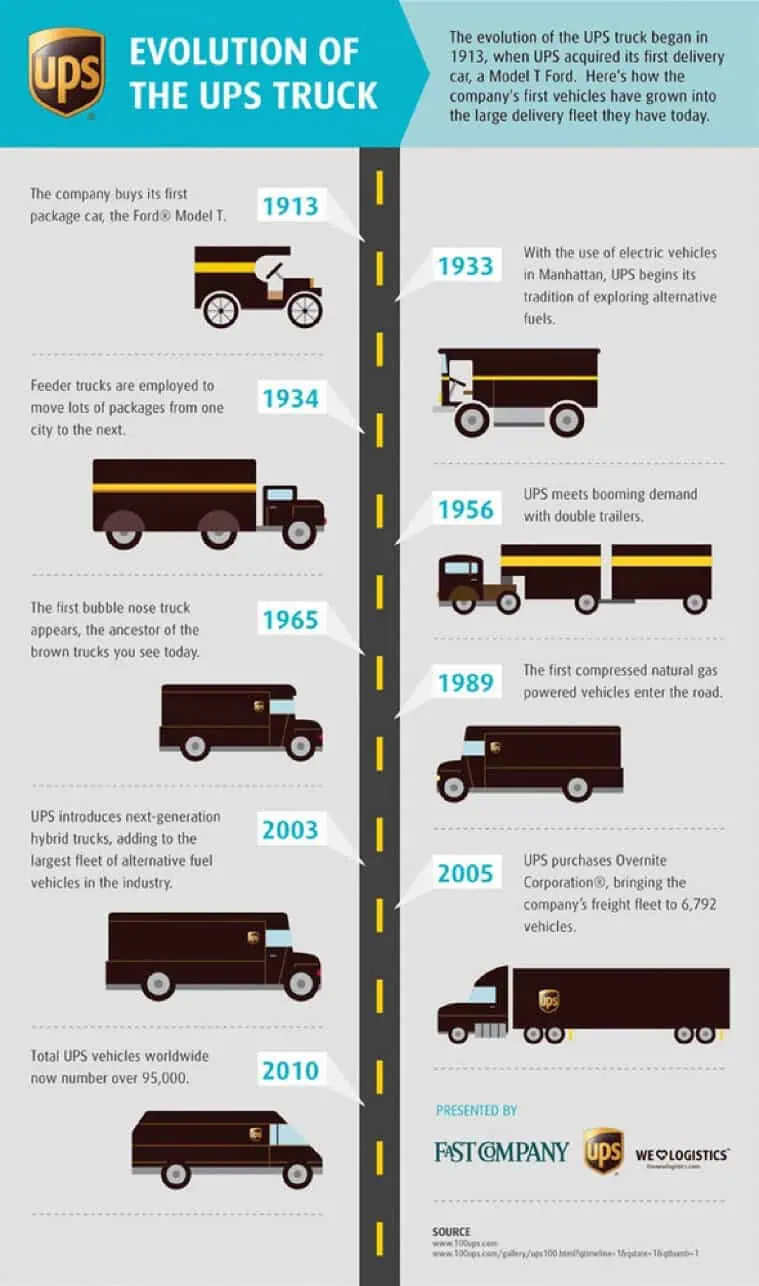
Despite its long and excellent operating history in the states of Washington and California, UPS did not achieve full intrastate delivery rights in those two states until 1966. In 1967, it won rights to serve the southeastern states. In 1971, UPS obtained intrastate rights in Oregon and broad rights across the central United States. Access to all the “lower forty-eight states” was achieved in 1975, the same year that Hawaii was added. Alaska joined in 1977, giving UPS customers access to all fifty states. The last holdout for intrastate rights was Texas, where UPS finally beat the Railroad Commission of Texas (and the companies it was protecting) in the courts in 1986. Hundreds of potential customers petitioned for the change.
Congress passed the Motor Carrier Act of 1980, which almost completely deregulated interstate trucking. In 1980, the US had 18,000 trucking companies, of which only a handful had national operating rights. Within ten years of the Act’s passage, America had 45,000 trucking companies, of which 20,000 had national rights. The Interstate Commerce Commission, which UPS had spent so much time and money fighting, disappeared. Competition arose, rates dropped, and service improved for all customers.
Jim Casey was at the forefront in all of these battles. Jim led UPS for fifty-five years. He continued as the Chief Executive Officer of UPS until 1962, when he handed over the reins at age seventy-four. Brother George had died in 1957, leaving Jim as the sole surviving founder. However, Jim remained on the board of directors and a leader and inspiration for UPS almost until his death at the age of ninety-five in 1983. When UPS achieved forty-eight-state coverage in 1975, the eighty-eight-year-old Casey could only say to his associates, “But you know, we are only serving 5 percent of the world’s population!” He wanted UPS to cover the earth. The man’s ambition knew no ceiling.
Jim Casey’s Legacy: UPS
Our “American Originals” series of short biographies has covered some of the most impressive and focused men and women in American history. Walt Disney and Estee Lauder created lasting global brands. George Eastman created Kodak, one of America’s greatest tech companies. Each of these companies has changed in various ways since its founder’s departure. The Disney company today is a far cry from the firm Walt left behind, now owning networks like ESPN and ABC. Kodak is a shadow of its former self.
UPS is unique in that it is a direct descendant of the policies, values, and business of Jim Casey and his friends. The massive company today still earns about 80 percent of its revenue from package delivery. The strict military-like culture still lives. The policy of treating people with respect and paying them well continues unabated. “Never promise more than you can deliver” remains the watchword of this huge enterprise.
How huge is it?
In 2017, UPS delivered over 19 million packages a day, totaling 5.1 billion for the year. UPS’s 454,000 well-treated and well-paid employees make it one of the world’s largest private company employers. 2017 revenues totaled $65.9 billion, making it the largest non-government transportation company on earth. At a market capitalization of about $100 billion, it is also the most valuable transportation company, above any airline or railroad. Despite paying what many would consider excessive salaries and hourly rates, the company offers reasonable prices and yet still made a profit of $4.9 billion after taxes in 2017. These numbers are remarkable by any standard.
World trade and ecommerce, including Amazon, would have been crippled without UPS.

“Service – the sum of many little things done well.”
Most of the world’s people are now familiar with UPS’s brown vehicles and brown uniforms. UPS operates about 118,000 vehicles. It generates $33.9 billion in annual revenue from its American trucking operations, one-third more than FedEx and almost five times as much as the next biggest trucking company, J. B. Hunt. UPS’s 280,000 hard-working Teamster drivers receive outstanding pay and benefits, with many making over $100,000 per year including holiday overtime. Over 60 percent of UPS’s revenue is spent on employee compensation and benefits.
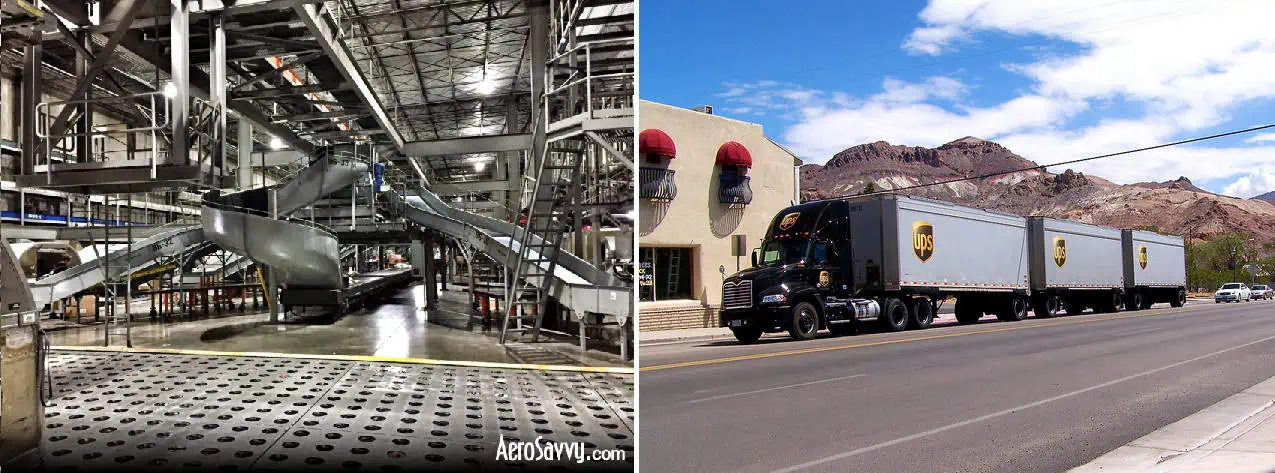
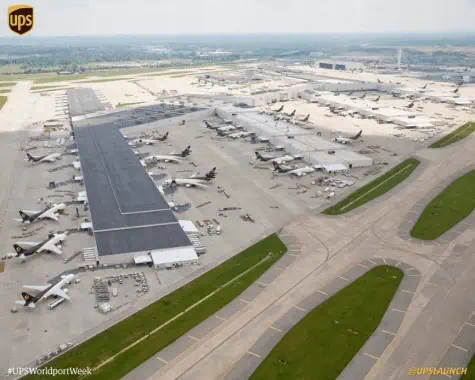
After the rise of FedEx (founded in 1973), UPS became serious about air delivery, and in 1981 began to build its own global airline. The 720 global destinations UPS serves equal almost double the runners-up: 375 at FedEx and 373 at United. In 2016, UPS Air carried 11.2 million ton-kilometers of freight (one ton carried one kilometer), making it the third largest air cargo company. UPS’s largest aviation hub at Louisville, Kentucky, is called “Worldport.” Here, UPS aircraft make three hundred arrivals and departures daily. Worldport has 33,000 conveyors stretching 155 miles in the 5.2-million square-foot facility. The more than 30,000 workers at Worldport use this machinery to sort up to 416,000 packages an hour—two million on a typical night shift and up to four million during the Christmas holiday season. Many of those night workers are students who work part time—they are eligible for 100 percent paid tuition at the University of Louisville’s Metropolitan College. Over 3,000 students take advantage of this UPS benefit.
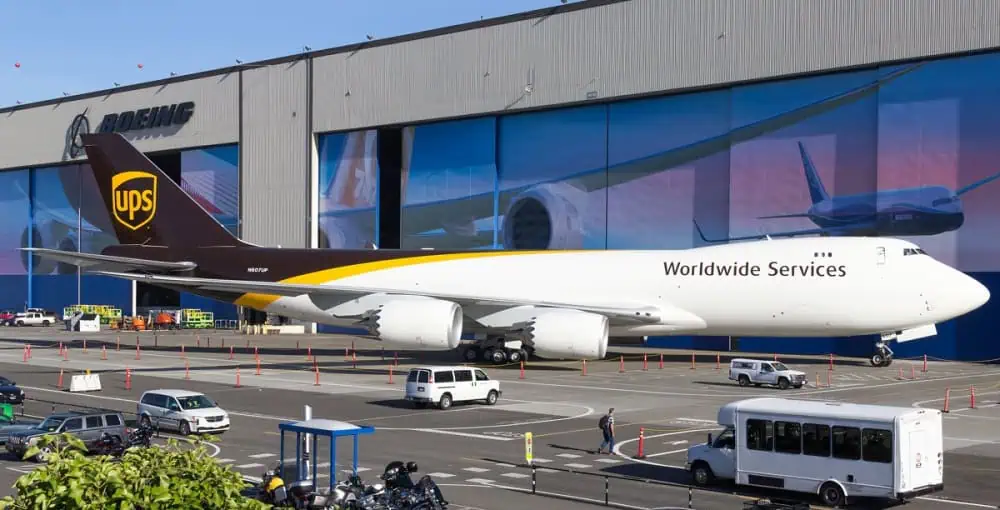
Proceeding from Jim Casey’s obsession with efficient service, today UPS provides “logistics” services to customers around the world—in 220 countries. In Louisville, UPS employees repair computers and pack cameras for large customers. UPS uses the latest technologies and techniques to get the job done—from using advanced routing software to being one of the US’s largest customers of the railroads (for hauls over five hundred miles). The giant Chicago Area Consolidation Hub each day handles 92 trains of package containers. This hub employs over 5,000 people in its 1.5 million square feet.
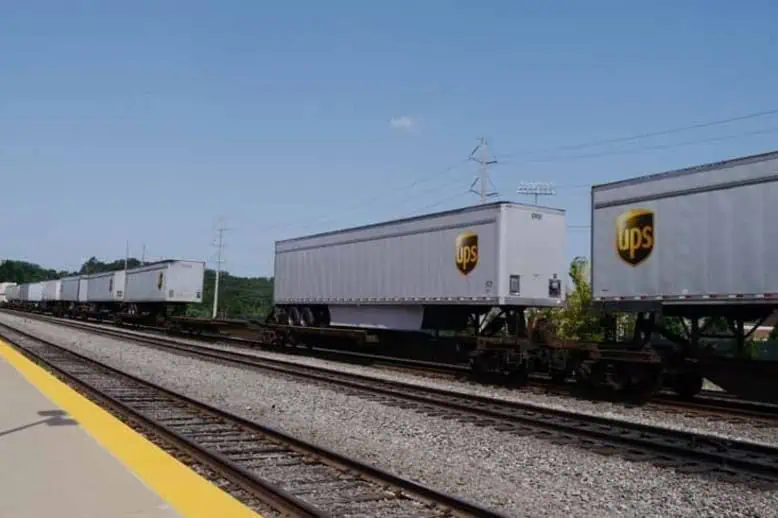
The Chicago and Louisville operations are only two of over 2,500 UPS facilities worldwide. Add to that more than 5,000 UPS Stores, 39,000 drop boxes, and over 27,000 other access points. Total space used by the company amounts to over 35 million square feet.
It can be hard to imagine the challenges of running such a far-flung empire. Google, Apple, Goldman Sachs, McKinsey and Company, and others may find having fifty or five hundred locations challenging. Leading, managing, monitoring, and communicating with over 400,000 people in over 2,000 locations requires tremendous managerial skills and systems. To accomplish this consistently and profitably, for 111 years, is one of the miracles of modern life.
In the latest Harris Poll of Corporate Reputations, UPS ranked seventh of all companies, the only transportation company in the top ten. UPS consistently shows up in lists of the best companies to work for, the most admired companies, and the best places for diversity (over a quarter of UPS managers are women and over a quarter are minorities).
In all those years, nobody had to rethink Jim’s values. Nobody had to “revisit” his emphasis on openness and sharing. Nobody had to undo his conveyors and systems. Nobody had to “reinvent” UPS. Yes, many times UPS had to adapt—to regulators, to new competitors, to the rise of FedEx, to cultures in other countries. But at its core, this enterprise remains above all else Jim Casey’s dream.
Jim Casey The Man And Philanthropist
The paragraphs above tell little of the personal life of this humble, somewhat shy, but very curious man.
Jim Casey never married. He did not have a house, living out of hotels most of his life. He obsessed on UPS. But was he one dimensional?
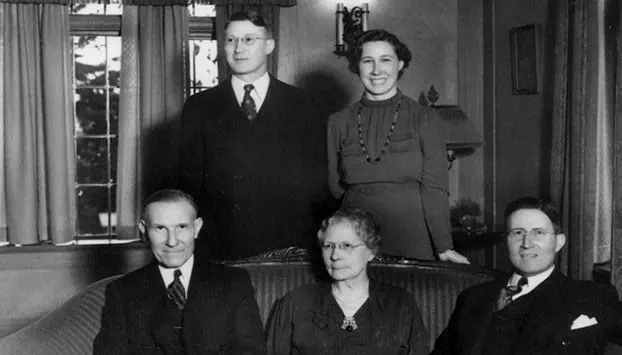
In 1948, he and his siblings used their UPS stock to set up the Annie E. Casey Foundation to honor their mother. Focused on children with tremendous challenges—such as those who have been in and out of multiple foster homes—today this foundation has $2.5 billion in assets, and hands out well over $100 million per year. Those assets still include over $300 million worth of UPS stock.
In 1966, this foundation created a separate entity, the Casey Family Programs, to also help children. That organization today has assets of over $2.2 billion and spends about $130 million per year helping kids.
Jim’s sister, Marguerite, also created the Marguerite Casey Foundation, and Jim and his brother funded the most advanced eye clinic and hospital in the northwest, Portland’s James and George Casey Eye Institute.
While Jim Casey’s obsession was on the welfare of UPS employees, he also found ways to use his fortune to help others, unrelated to UPS. Other foundations help finance college for the children of UPS employees and promote many other worthy causes.
“The Bottom Line”
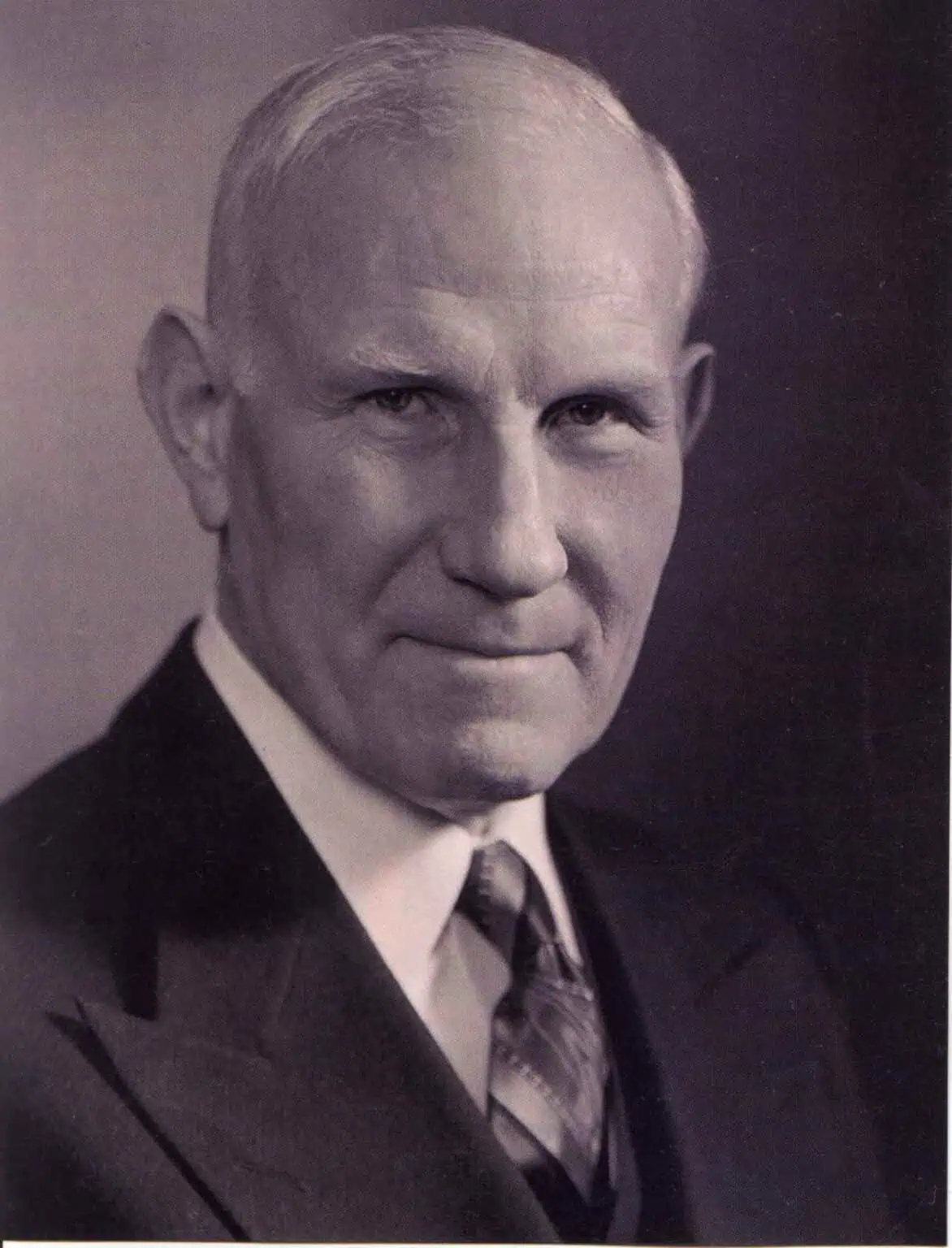
This story above all else proves that “determined men, working together, can do anything.” The history of UPS proves that one (enormous) company can serve the public, serve its employees, and serve its stockholders at the same time. It proves that a clear, correct, foresighted vision need not be “reinvented” with each passing fad. That great companies do not have to be “sexy” or at the leading edge of science; that there is potential in the most mundane of tasks. Even if most Americans have never heard of Jim Casey or thought about what UPS does for them, this story proves that one man, with the right associates, can have a large and lasting impact in making our society productive and prosperous.
Sources
This story is largely based on the excellent history of Jim Casey and UPS, Big Brown: The Untold Story of UPS, written in 2007 by longtime UPSer Greg Niemann. Niemann’s book contains more extensive information on UPS in the years after Casey. More can be learned in another 2007 book, Driving Change: The UPS Approach to Business, by Mike Brewster and Frederick Dalzell. For a more visceral sense of the company’s power and methods, see this YouTube video of Worldport and this National Geographic video about the company. Additional information was gathered from the UPS Investor Relations website, UPS history website, the websites of the foundations referenced, Wikipedia, and Google searches.
Gary Hoover has founded several businesses, each with the core value of education. He founded BOOKSTOP, the first chain of book superstores, which was purchased by Barnes & Noble and became the nucleus for their chain. He co-founded the company that became Hoover’s, Inc. – one of the world’s largest sources of information about companies, now owned by Dun & Bradstreet. Gary Hoover has in recent years focused on writing (multiple books, blogs) and teaching. He served as the first Entrepreneur-In-Residence at the University of Texas’ McCombs School of Business. He has been collecting information on business history since the age of 12, when he started subscribing to Fortune Magazine. An estimated 40% of his 57,000-book personal library is focused on business, industrial, and economic history and reference. Gary Hoover has given over 1000 speeches around the globe, many about business history, and all with historical references.

